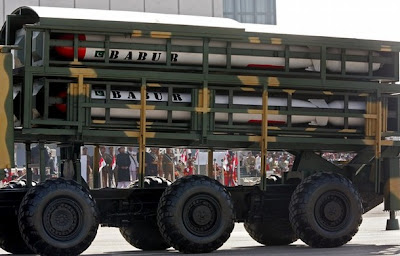Let's assume following situation of cold start doctrine...
Time line January 2016
the build up:
There is a massive terror attack on Indian soil by non state actors originating from pakistan. there is troop buildup similar to 26/11 and then in couple of months everything calms down in the media.
Cold start
Day 1:
22.30 - Brahmos / Nirbhay Missile strikes on forward radar installations, and forward aribases in eastern sector of pakistan.
22.45 hrs:
12 strike packages , each strike package consisting of 4 M2k , 2 MKI flying Air Interdicition config, 3 Mig29SMT and 4 Rafale's flying Air superiority hit target the following targets
PAF Mianwali
PAF Sargodha
Paf jacobabad
PAf mushaf
6th Armoured Division headquartered at Gujranwala
1st Armoured Division headquartered at Multan
12th Infantry Division headquartered at Murree
26th Mechanised Division headquartered at Bahawalpur
22nd Division headquartered at Sargodha
(render them temporarily non operational) (assume 80% objectives achieved according to plan )
4 IAF strike packages same configuration as above strike Pakistan navy preceded with missile attacks from forward deployed INS Delhi, INS Trishul and INS trikand.
4 Naval strike packages attack PN assets in sea in hunter killer formation, composed of 6 Mig 29 each
Indian navy begins forward deployment for its CBG
23.30 hrs:
First wave begins.
IBG combination (assume) Fast attack Light IBG
25 t90, 10 Arjun MBT, 15 IFV, 12 Support vehicle, 3 LCH/ALH/MI 35 forward control, 6 Pinaka batteries. 2 mig 29 cover for each light IBG. 1 battalion of infantry
18 light IBG squads break loc at rajasthan and punjab and gujrat sectors,
00.00 hrs Heavy Air interdiction mission
strike package combination : 4 jaguar 4 M2k bomber missions, 4 Su30 Multirole configuration, 3 Mig 29's flying air superiority mission.
16 strike packages clear ground resistance for light IBG's
00.30 heavy shelling across all available assets
01.15 hrs
Heavy IBG Configuration
35 T90/T72, 15 ArjunMBT, 30 IFV, 4 batteries of SA8, 8 tunguska, 3 LCH/ALH/Mi 35 Forward air control configuration, 10 Pinaka mlrs, (4 Mig 27 close air support and 4 Su 30 MKI dedicated air support for group of 4 heavy IBGS)
16 Heavy IBG's and another 8 light IBG's break LOC in punjab and rajhastan and gujrat sector, Heavy IBG's aim for control of forward PA targets, Light IBG's reinforce the first wave,
01.45 Hrs. Fire missions for Artillery and cruise missiles directed by forward IbG's at resistance.
02.00 First wave IBG"s hold ground with air cover.
02.30 hrs :
Second Strike mission begins after damage estimation of first IAF strike.
20 strike packages (strike package consisting of 4 M2k , 2 MKI flying Air Interdicition config, 3 Mig29SMT and 2 MKI flying Air superiority) forward air installation and armored divisions targeted.
03.10 8 Light IBG from second wave trailing first wave by 2 hrs reinforce 8 light IBG's in Punjab sector. In rajhasthan sector and gujrat sectors 8 IBGS of first wave join into 4 IBGS .
04.00 hrs 12 dual Light IBG's and 16 Heavy IBG's are in pakistani territory engaged with PA in 3 sectors at 28 different locations. 14 locations face very stiff resistance, 6 locations see lighter resistance and IA IBG's break through at 8 locations.
4.30 2 Armored divisions break through into pakitan in 8 groups, and 411 (Independent) Parachute Field Company (Bombay Sappers), 622 Parachute Composite Company ASC are air dropped into forward engagement areas.
5.00 3 Infantry divisions and 2 mountain division mount attack on kashmir sector.
5.30 Air interdiction Missions, Strike package, 4 mig 27 & 4 jaguar strike configuration, 2 rafale flying air superiority, 8 mig 21 air patrol.
6.00 Air Interdiction mission, Strike package, 3 m2k, 5 MKI strike configuration 6 rafale air superiority configuration, 3 Mig 29 SMT air patrol, 2 MKI dedicated electronic warfare configuration.
Assume such are the initial 7 hrs of cold start? what comes next?





















